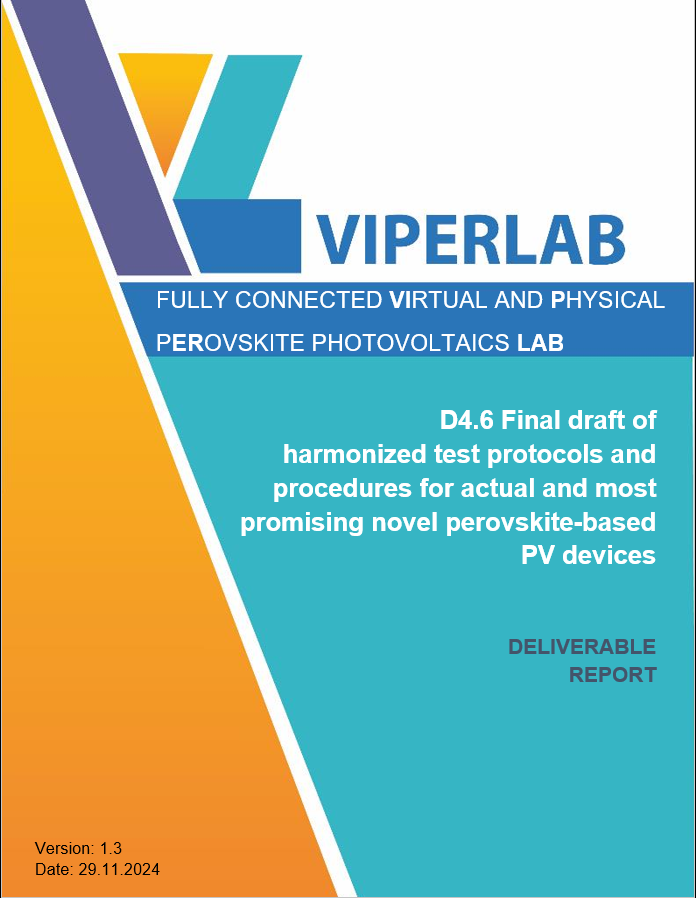 |
|
D4.6 FINAL DRAFT OF HARMONIZED TEST PROTOCOLS FOR ACTUAL AND MOST PROMISING NOVEL PEROVSKITE-BASED PV DEVICES
In this report, several existing protocols for performance and aging, published by different entities (IEC, NREL, ESTI …) are reviewed, and are combined with the conclusions of the three VIPERLAB round robins (RR), executed within WP9 “JRA3-Characterization and standardization”, on electrical performance measurements of the perovskite solar cells for the definition of harmonized test protocols.
Several topics are important in the phase of sample preparation:
- Exchange of properly packaged perovskite devices in order to minimize degradation effects due to ambient conditions present during storage and, transport. .
- Integrate a rear-side support designed to position the device precisely perpendicular to the primary light beam direction. This support should also feature thermal conductivity. so that temperature control systems can be effectively applied. The design of the rear side support should even include provisions to allocate a temperature sensor.
- The samples should include wirings to minimize differences due to contacting issues.
- A minimum sample size should be defined to avoid effects derived from different mask positioning.
Regarding the measuring system, all the laboratories should fulfil following minimum technical requirements:
- The spectral distribution of the light source should be as close as possible to AM1.5G spectrum. For single junction cells this effect can be minimized by using a spectral mismatch correction.
- Use of a reference cell spectrally matched with the device to be measured.
- For tandem cells a multi-lamp sun simulator is needed.
- For tandem cells, measurement of EQE is highly recommended for the adjustment of the spectral distribution.
Regarding the measurement protocols, it is considered a better option to report key values such as Isc, Voc, and PCE instead of providing the full I-V curve. Most of the reported protocols follow the same sequence of (a) performing a forward and reverse voltage sweep, respectively, (b) keeping the device under illumination at a voltage close to the VMPP for several minutes, and (c) repeating the forward and reverse voltage sweeps.
A general conclusion from the VIPERLAB Round Robins is that these iterative inter-laboratory testing efforts successfully standardized measurement procedures across different laboratories. Using different organizational models (star-shaped, binomials or central-hub), the framework ensured consistent protocols distribution, identified discrepancies systematically, and refined methodologies to enhance reproducibility.
The review of published protocols and standards has provided key guidelines. IEC TR 63228:2019, PACT, ISOS, and emerging standards (e.g., IEC DTS 60904-1-4) emphasize preconditioning, metastability management, and stress-specific evaluations. These protocols address challenges like hysteresis, spectral sensitivities, and unique degradation mechanisms, facilitating harmonized performance assessments and long-term reliability tests for both single junction and tandem perovskite solar cells in lab and outdoor conditions.
|



